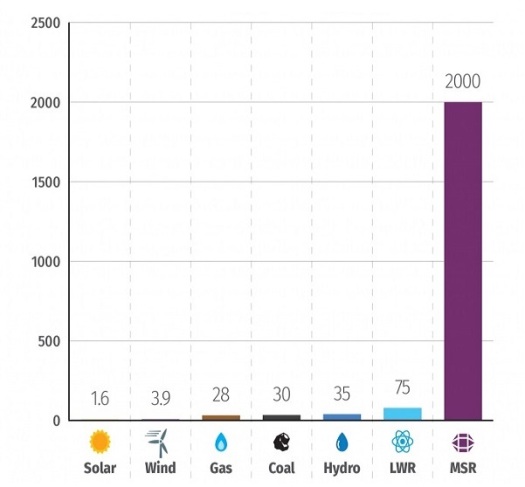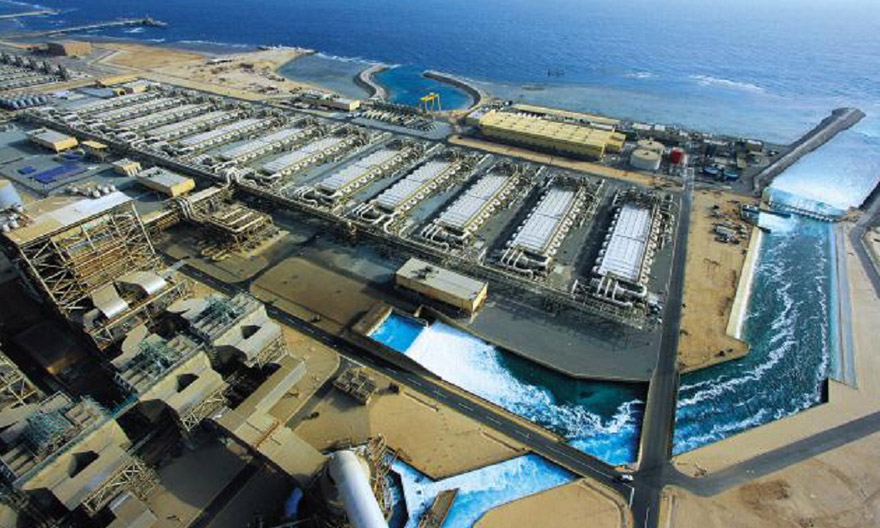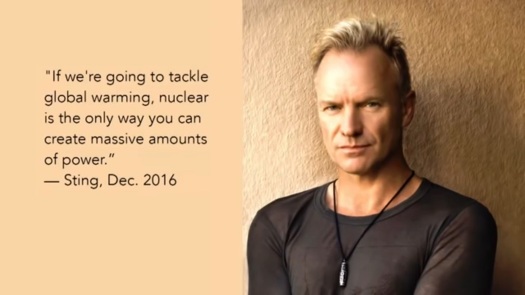The most modern reproduction and replication of the work of the 1960’s undertaken by Flibe Energy Inc. is reviewed by Oak Ridge National Laboratories in a private public partnership. (ORNL is managed by UT-Battelle).
Today we spotlight the most recent production from Oak Ridge National Laboratories in Tennessee, USA, (ORNL). The report is all about Molten Salt Fission Technology Powered by Thorium. This concise 54 page report is akin to the ORNL report produced 44 years ago in August 1978, entitled Molten-Salt Reactors Efficient Nuclear Fuel Utilization without Plutonium Separation and further extends the ORNL work reported in The Development Status of Molten Salt Breeder Reactors from August 1972. (It appears that August is the month of important reports by ORNL). This later behemoth 434 page report is the mother lode of information for all work done at ONRL regarding Molten Salt Fission Energy Technology powered by Thorium. Anyone looking at investing into this technology must make it a priority read – all of the work has been done before. The report can be found further below in this post.
This most recent report on this technology has been produced by the authors, Dr. Richard L. Reed, Dr. Louise G. Evans and Donald N. Kovacic, B.Sc. All are senior scientists involved with Molten Salt Technology at ORNL.
Before we discuss the report, first we’ll discuss why it’s important to define new terminology for nuclear energy sector.
For generations massive amounts of negative press and target funding has branded the word nuclear as simply bad. And let’s face it. Nuclear Physics is complicated, and so conversations get complicated pretty quickly too. Let’s just look at the elements we can play with.
Out of 118 elements in the Periodic Table, 80 are stable having 339 isotopes, leaving 38 elements – those heavier than lead – as unstable. These 38 elements have over 3,000 possible isotope existent states. Hence thousands of unstable isotopes, lead to 10’s of thousands of combinations of decay, neutron absorption, and possible fission events, from neutrons both fast – high energy particles, and thermal – low energy particles, and then hundreds of other non responsive isotopes of non responsive elements that exhibit different behaviours over time and distance. For example water is better for absorbing fast neutrons and lead is better for thermal neutrons. Boron-10 absorbs neutrons, whilst boron-11 does not. Neutrons bounce off, are reflected by graphite, beryllium, steel, tungsten carbide, and gold (There are more too). OK, so the picture is clear – fission energy gets complicated very quickly.
Remember too, that this all started in a race to build nuclear weapons – not to make energy. Weapons should all be dismantled and destroyed. USA and UK should follow in the footsteps of South Africa who dismantled their last bomb in 1989. Today the USA and UK combined have enough firepower to destroy humanity entirely 150 times over. We are thankful that Molten Salt technology was pursued with such vigor precisely because it cannot make weapons. It only makes energy.
The Thorium fuel cycle is “intrinsically proliferation-resistant”
The International Atomic Energy Agency, 2005
Thorium fuel cycle — Potential benefits and challenges IAEA, May 2005
Hans Blix, former head of IAEA explaining why Thorium, and Molten Salt Fission Energy Technology doesn’t even need to be addressed by the IAEA.
by Evelyn Andrespok, March 2010
We are also thankful that nuclear weapons are now illegal (why did THAT take so long?)
Treaty on the Prohibition of Nuclear Weapons
So back to the nomenclature.
We call it Fission, not nuclear.
We call them Machines, not reactors. (By the way, there’s no reactions going on, and indeed in the core region fuel is “burned” according to the physics text books. In Fission, atoms are split, so “splitter” is the correct term!)
We say Molten Salt Fission Energy Technology – MSFT. Not anything else. Calling it LFTR ties the technology to a specific fluid-fuel type. Even the company FLIBE are considering changing the Beryllium metal to Sodium metal (the BE means Beryllium in their company’s name).
And Fission – Nuclear Energy – is effectively Carbon Free. Even Bill Gates knows this.
Bill Gates getting into Molten Salt
The latest ORNL report is excellent at defining the challenges already identified 50 years ago. The net result is that ORNL have made recommendations to modify the Flibe design thus eliminating any chance of weapons production from Molten Salt Fission Energy Technology powered by Thorium.
Some of these recommendations are:
- Use multiple, smaller decay vessels for salt distribution for emergency shutdown events.
- Install stringent material monitoring systems with tamper evident features for fuel processing.
- Use batch fuel processing and not continuous for better inventory controls.
- Recombine fuel elements to increase gamma activity of the fuel processing cycle.
- Allow U232 production to increase hence increasing the self protection mechanism.
- Eliminate the decay fluorinator entirely by allowing protactinium to decay in the fuel salt.
- Remove physical access to the UF6 stream by have vessels immediately adjacent to each other.
These, and other recommendations, effectively define Molten Salt Fission Technology powered by Thorium as proliferation proof.
You can see the full report here:
The latest ORNL report must be read in conjunction with a 1978 report, also by ORNL staff – and also released in the month of August – where proliferation concerns of the earlier designs where addressed. In that report the authors J. R. Engel, W. R. Grimes, W. A. Rhoades and J. F. Dearing allowed the build up of U232 to create self protection whilst still maintaining machine performance – “denatured”, as they called it.
Here is that report, Technical Memorandum TM 6413, from August 1978:
ORNL TM 6413 August 1978 Molten-Salt Reactors for Efficient Nuclear Fuel Utilization Without Plutonium Separation
Here’s one of the authors of that report – John Richard “Dick” Engel – shortly before his passing in 2017.
The following documents should also be read together with ORNL report 2022/2394 to ensure full understanding:
ORNL TM 3708 1964 Molten Salt Reactor Program Semiannual Progress Report for Period Ending July 31, 1964
This report summarized the work leading up to the Molten Salt Reactor Experiment, that ran from 1965 to 1969 – the “most boring experiment ever. It did everything we expected it to do.”, said by Dr. Sydney Ball.
ORNL TM 4658 1972 Chemical Aspects of MSRE Operations
This report debunks corrosion myths surrounding Molten Salt Technology.
ORNL TM 4812 August 1972 Development Status of Molten-Salt Breeder Reactors
This is the report that ended in the program being shut down. The USD 1 billion funding request was too obvious to ignore and many people realised what impact this would have on existing business interests in energy.
Why MSRS Abandoned ORNL Weinberg’s Firing by Bruce Hoglund
A concise summary of the facts behind the closure of the Molten Salt Program at Oak Ridge.
Here is the 2015 assessment report referenced in ORNL report 2022/2394.
Electric Power Research Institute – Program on Technology Innovation: Technology Assessment of a Molten Salt Reactor Design – The Liquid Fluoride Thorium Reactor (LFTR)
Electric Power Research Institute Report Abstract
EPRI collaborated with Southern Company on an independent technology assessment of an innovative molten salt reactor (MSR) design—the liquid-fluoride thorium reactor (LFTR)—as a potentially transformational technology for meeting future energy needs in the face of uncertain market, policy, and regulatory constraints. The LFTR is a liquid-fueled, graphite-moderated thermal spectrum breeder reactor optimized for operation on a Th-233U fuel cycle. The LFTR design considered in this work draws heavily from the 1960s-era Molten Salt Reactor Experiment and subsequent design work on a similar two-fluid molten salt breeder reactor design. Enhanced safety characteristics, increased natural resource utilization, and high operating temperatures, among other features, offer utilities and other potential owners/operators access to new products, markets, applications, and modes of operation. The LFTR represents a dramatic departure from today’s dominant and proven commercial light water reactor technology. Accordingly, the innovative and commercially unproven nature of MSRs, as with many other advanced reactor concepts, presents significant challenges and risks in terms of financing, licensing, construction, operation, and maintenance.
This technology assessment comprises three principal activities based on adaptation of standardized methods and guidelines: 1) rendering of preliminary LFTR design information into a standardized system design description format; 2) performance of a preliminary process hazards analysis; and 3) determination of technology readiness levels for key systems and components. The results of the assessment provide value for a number of stakeholders. For utility or other technology customers, the study presents structured information on the LFTR design status that can directly inform a broader technology feasibility assessment in terms of safety and technology maturity. For the developer, the assessment can focus and drive further design development and documentation and establish a baseline for the technological maturity of key MSR systems and components. For EPRI, the study offers an opportunity to exercise and further develop advanced nuclear technology assessment tools and expertise through application to a specific reactor design.
The early design stage of the LFTR concept indicates the need for significant investment in further development and demonstration of novel systems and components. The application of technology assessment tools early in reactor system design can provide real value and facilitate advancement by identifying important knowledge and design performance gaps at a stage when changes can be incorporated with the least impact to cost, schedule, and licensing.

Finally, a reminder. Why all the fuss about Thorium Molten Salt anyway? What did those giants of nuclear energy see starting way back in 1947 that we don’t see today? It’s because of this chart by ANSTO of Australia. It’s a little known – public – secret, that Australia, part of the Generation IV Forum, but ironically staunchly anti nuclear, is also one of the strongest countries in technology development for Molten Salt Fission Energy powered by Thorium.

We hoped you enjoyed this article, produced free for all advocates and students of Molten Salt Fission Energy powered by Thorium. If you like this work and want to see more, please support this work by going to our contributions page, where you can then find our Patreon account.
Links and References
- https://www.ornl.gov/
- https://en.wikipedia.org/wiki/UT%E2%80%93Battelle
- https://flibe-energy.com/
- https://www.worldatlas.com/articles/how-many-elements-are-there.html
- https://en.wikipedia.org/wiki/Isotope
- https://www.osti.gov/biblio/5289038-molten-salt-reactors-efficient-nuclear-fuel-utilization-without-plutonium-separation
- https://www.osti.gov/biblio/5688579-molten-salt-reactors-efficient-nuclear-fuel-utilization-without-plutonium-separation
- https://digital.library.unt.edu/ark:/67531/metadc1033578/
- https://www.osti.gov/biblio/4099994-status-us-program-development-molten-salt-breeder-reactor
- https://www.linkedin.com/in/richard-reed-98769430/
- https://www.linkedin.com/in/louisegevans/
- https://www.linkedin.com/in/donald-kovacic-7b468a6/
- https://www.nuclear-power.com/nuclear-power/reactor-physics/atomic-nuclear-physics/fundamental-particles/neutron/shielding-neutron-radiation/
- https://www.worldatlas.com/articles/how-many-elements-are-there.html
- https://en.wikipedia.org/wiki/Treaty_on_the_Prohibition_of_Nuclear_Weapons
- https://en.wikipedia.org/wiki/South_Africa_and_weapons_of_mass_destruction
- https://wp.towson.edu/iajournal/articles/2010-2019/fall-2010-issue/why-south-africa-dismantled-its-nuclear-weapons/
- https://www-pub.iaea.org/mtcd/publications/pdf/te_1450_web.pdf
- https://splash247.com/bill-gates-joins-nuclear-powered-shipping-push/
- https://www.epri.com/
- https://www.southerncompany.com/
- https://www.epri.com/research/products/000000003002005460
- https://newenergyandfuel.com/http:/newenergyandfuel/com/2011/11/04/thorium-fueled-nuclear-plant-to-be-built/
- https://www.youtube.com/watch?v=tyDbq5HRs0o
- https://www.legacy.com/us/obituaries/knoxnews/name/john-engel-obituary?id=16904544
- https://www.youtube.com/watch?v=_yO0Qk-_Gms
- https://www.linkedin.com/in/bruce-hoglund-52194814/
- https://www.ansto.gov.au/our-science/nuclear-technologies/reactor-systems/advanced-reactors/evolution-of-molten-salt
- https://www.popsci.com/technology/article/2010-08/thorium-reactors-could-wean-world-oil-just-five-years/
- https://www.gen-4.org/
#FissionEnergy #NuclearEnergy #TheThoriumNetwork #Fission4All #RadiationIsGood4U #GotThorium #ORNL #OakRidge #MSRE #MoltenSaltFissionEnergy #Thorium







































You must be logged in to post a comment.